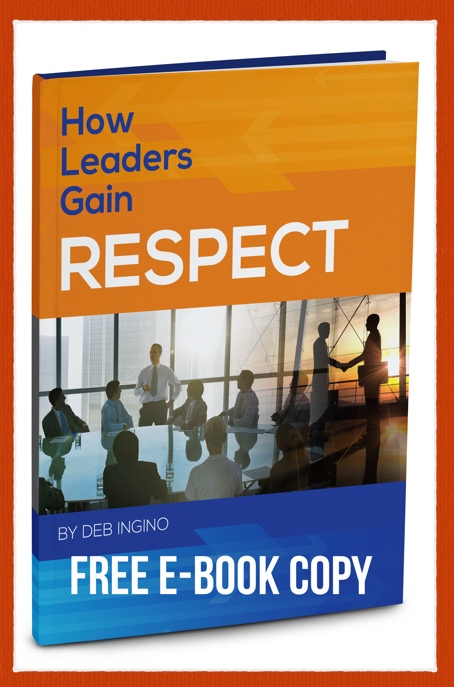
The workplace is made of people. Inevitably, there will be conflict.
There are two kinds of conflict: inner conflict and outer conflict. And, often, these are intricately connected.
The result?
Workplace disputes, silo effects, stand-offs, and stalemates. Personality clashes. Lack of productivity. Poor communication. Arguments. Silence. Aggression and passive aggression. Triangulating. Lack of focus. Apathy. Dread. High turnover rate. Frustration.
Each of these affects teams and organizations all the way to the bottom line.
How can you as a leader effectively resolve conflict within your organization?
1. See conflict for what it is – a clash or an incompatible variance.
When you consider this definition, and you think of the diversity of the people in your workforce, you will see that conflict is a natural occurrence. People with different strengths, skills, and life experience will inevitably have a variance.
The difference is of great value to your organization. But it can also be a liability.
2. Realize that conflict is an indicator.
It helps to recognize conflict for what it is – an indicator of differences of thought, opinion, backgrounds, strengths, and viewpoints. When conflict arises, it indicates something within a person or a team is clashing.
When a person does something that is not true to their strengths and core values, for example, they will feel stress and anxiety. This can then turn into outward conflict.
Outward conflict is an indicator light. Turning the light off doesn’t solve the problem. The key is to get to its root.
3. Deal with conflict at its core.
When someone on your team (or your team as a whole) exhibits conflict, check the proverbial manual and troubleshoot the problem.
Here are some of those troubleshooting tips:
Individual Conflicts
Start at the individual level to identify the clash.
- Does the position clash with the employee’s strengths?
- Are the employee’s values in conflict with the work, the team, or the organization?
- Is there a culture match between the person, the team, and the organization?
- Is an employee lacking in recognition?
- Do they feel devalued?
Resolving individual conflicts (inner conflicts) goes a long way toward resolving team conflicts.
- For example, even an exemplary employee who is assigned to a position that does not match their strengths will experience stress and conflict. This may surface in a number of ways – insecurity, apathy, frustration, anger – but it will eventually surface.
- An employee who values family but who is expected to work nights and weekends and be on call all the time will experience conflict.
If you have a great employee who is in conflict, get to the root of the problem, and create a solution.
In these examples, assigning the exemplary employee to a position that allows them to use their best strengths at least 70% of the time is a win-win situation. The results can have a direct and compounded impact on the company’s bottom line.
For a parent, flex time may resolve the conflict. If this is their issue and you help them resolve it, chances are you will end up with a happy, highly productive, and loyal employee who is then able to focus on the work at their best times – best focus at best times is a formula for high productivity and success.
Team Conflicts
If individual conflicts are not identified, then team conflicts would be the next level to address.
Again, identify the clash.
- Poor Communication
- Different Strengths, Skills, and Experience
- Lack of Trust
Then address the issue.
This is key: Attack the issue and not the person.
As a leader, express your recognition and appreciation for each individual’s strengths, skills, and experience. Team strengths mapping has the effect of bringing teams together by learning to appreciate and value their individual strengths.
Set the example of communication for your team. Keep your lines of communication open with them, and train them to do the same with other team members.
Learning to communicate with others using their terms and values goes a long way toward avoiding conflict. (Click here to learn more about the Maxwell Method of Communication Impact Report and how it can help you and your team in this area.)
If your people are taught to value their various individual strengths and if the lines of communication are open, a high percentage of your problems will resolve themselves.
Are you a leader dealing with conflict?
Congratulations! It is an indicator that you have a diverse team. The potential is yours to develop, and the rewards are many if you do.
As the CEO of Strength Leader Development, Deb Ingino is a highly sought-after international executive mentor, coach, trainer and speaker. Deb is well versed in global business operations and helps business leaders and their teams to discover and leverage their strengths, so they can create highly collaborative teams that deliver great results. With a refreshingly direct style, Deb helps leaders and their teams to deliver profitable results. Connect with Deb to learn more about her mentorship and coaching programs to equip you with advanced strategies to elevate your results.
When you have a strong team that collaborates well,
you have a competitive advantage.
Click here to get instant access to the complimentary FREE e-book!

+ view comments . . .